Trend of the Week: Data in Action

Everyone knows that data is an indispensable resource, but putting it to use is a whole different challenge from collecting it in the first place. Here’s what you need to know about today’s manufacturing trend, the industry’s increasing reliance on data-driven insights.
What manufacturers should do: According to NAM experts, manufacturers seeking to make the most of their data should focus on five key steps:
- Understand how to gather data to enable meaningful analytics.
- Improve data governance for quality and security.
- Determine what data are important to your business and operations.
- Learn how to assign value and view the data through the appropriate lens.
- Know how to use data to make business decisions.
Expert opinion: According to John Petrusick, managing director of NTT’s manufacturing data and analytics practice, companies should consider working backward to some extent, and start by thinking about which business processes the data will influence—and how.
- “Most of us have grown up in a world where we think of data as a flow from source to consumer, or left to right,” he noted. “In such thinking, we have generated analytics and insights historically by first thinking about ‘what data do I have?’ But what if we thought about generating analytics and insights by thinking ‘right to left’?”
Resources for you: Looking for more resources on data management? Start with these NAM offerings:
- This Master Class Series from the Manufacturing Leadership Council (the NAM’s digital transformation division) will guide you through case studies and best practices regarding data analysis.
- CONNEX Marketplace uses data visualization tools to help you make connections to suppliers and buyers, offering exceptional insight into your supply chain.
- The NAM’s Power of Small newsletter keeps small and medium-sized manufacturers up to date on advocacy, policy, digital trends and much more. Check it out.
Read the full 2024 trends report here.
Primary Goals: NAM Hits the Road in 2024
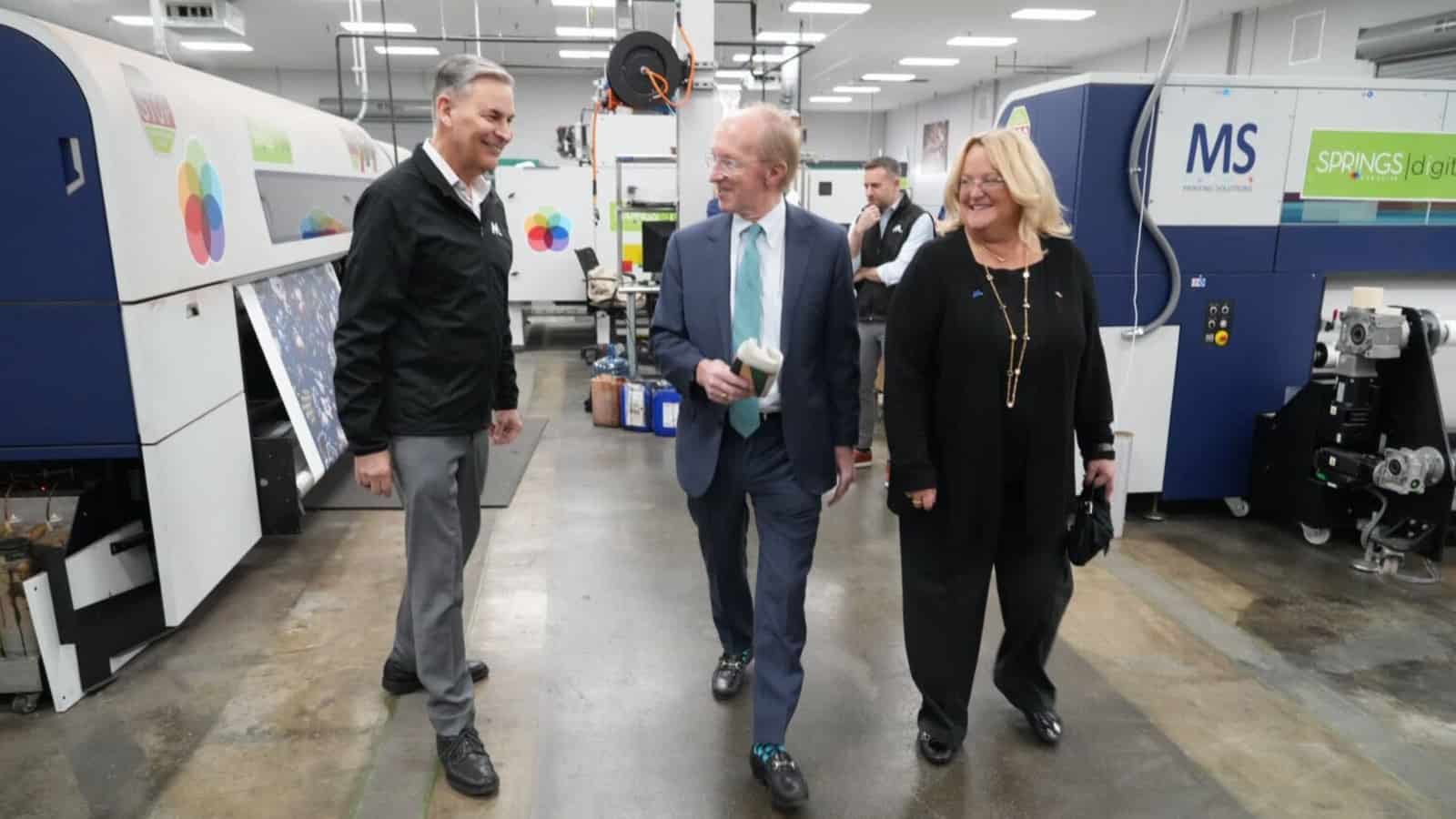
As candidates look to claim the support of manufacturers in 2024, the NAM launched its year-long 2024 Competing to Win Tour in South Carolina, days ahead of the South Carolina GOP primary.
- The tour spotlights the issues critical to winning not just manufacturers’ votes but also more manufacturing in the U.S.
Why it’s important: “We came to South Carolina to showcase the people and stories behind our industry and to translate their perspectives into action that will make our industry and country stronger,” said Johnson & Johnson Executive Vice President and Chief Technical Operations & Risk Officer and NAM Board Chair Kathy Wengel, who joined NAM President and CEO Jay Timmons, South Carolina Chamber of Commerce President and CEO Bob Morgan and South Carolina Manufacturers Alliance President and CEO Sara Hazzard on the first day of the tour.
- “Building these strong relationships beyond Washington, D.C., in the cities and states driving our sector deepens our understanding of regional challenges and reinforces the NAM as the leading voice representing all manufacturers, large and small,” Wengel added.
The launch: The tour began at Milliken & Company’s headquarters in Spartanburg on Wednesday, a poignant reminder of the importance of just one global technology-based manufacturer to lives, innovation and progress.
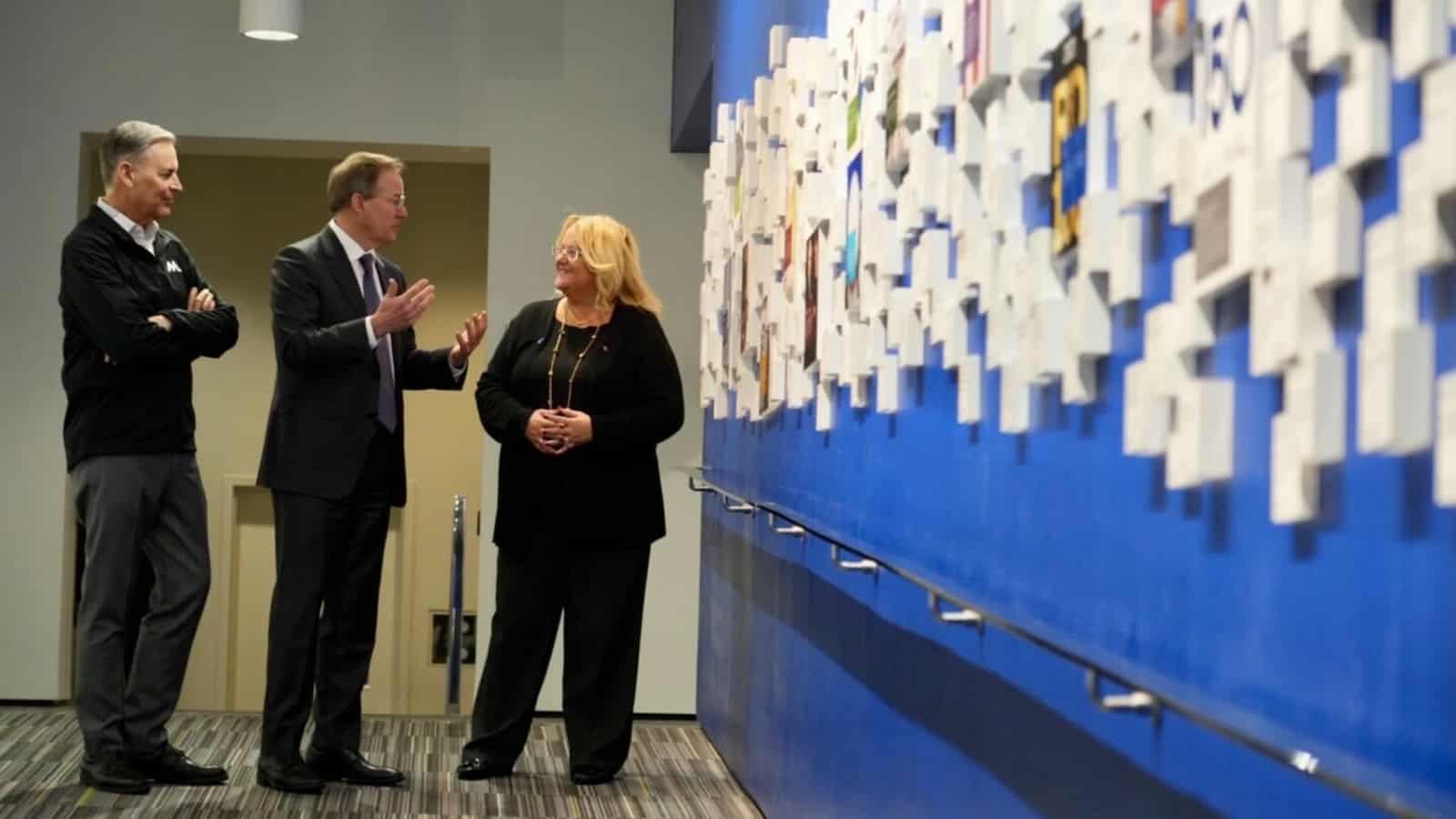
- The company’s 3,200 associates in the Palmetto State, as well as its broader U.S. and global team, make everything from safety gear and wound dressings and bandages to eco-conscious materials and technological innovations, such as digital printing, flooring, sustainable coating additives and more.
- “The average person touches about 30 to 50 [Milliken products] a day,” said Milliken President and CEO Halsey Cook.
- “Milliken embodies what we believe: manufacturing makes a positive difference. Their commitment to sustainability, ethics (named a World’s Most Ethical Company 17 years running) and a people-first workplace create a ripple effect,” said Timmons. “It’s why we need everyone supporting the success of manufacturers in South Carolina and the United States—to empower companies just like Milliken and help us grow more of them right here in America,” Morgan emphasized.
- “Milliken is a remarkable brand ambassador for the entire manufacturing industry in the United States,” summed up NAM Managing Vice President of Brand Strategy Chrys Kefalas. “As Michael Brown, Milliken’s executive vice president of operations, conveyed to us, the company is showing that digital transformation and artificial intelligence can be a force for good, helping its people leverage data analytics, for example, accelerating innovation and making modern manufacturing even more exciting for the next generation to be a part of.”
A boom story: Springs Creative Products Group CEO Derick Close, who heads several small enterprises in South Carolina, brought the NAM tour to Fort Lawn, South Carolina, where state-private partnerships and sound competitiveness policies have led to a boom in manufacturing investment and jobs.
- According to Close, recent investments in the community exceed $2.5 billion and stand to add 1,500 new jobs.
- Close, who is an economic development champion for South Carolina, took time to brief the group on how the area is ground zero as well in the story of the revival—and revolution—happening for the U.S. textile manufacturing sector, showing that U.S.-based textile manufacturers can compete against the rest of the world at quality, speed and price, so long as misguided policies don’t impede current advances. Springs Creative’s digital printing facility, which the NAM toured, is just one example. Springs Creative produces fabrics for such companies as Disney, Tempur-Pedic and Walmart.
- An added highlight of Close’s showcase was a tour of the new 1.5-million-square-foot, $423 million E. & J. Gallo wine and spirits production and distribution center—a testament to U.S. ingenuity and the more than 275 jobs it’s already created (with more on the way) to produce the best-selling spirit in the U.S.
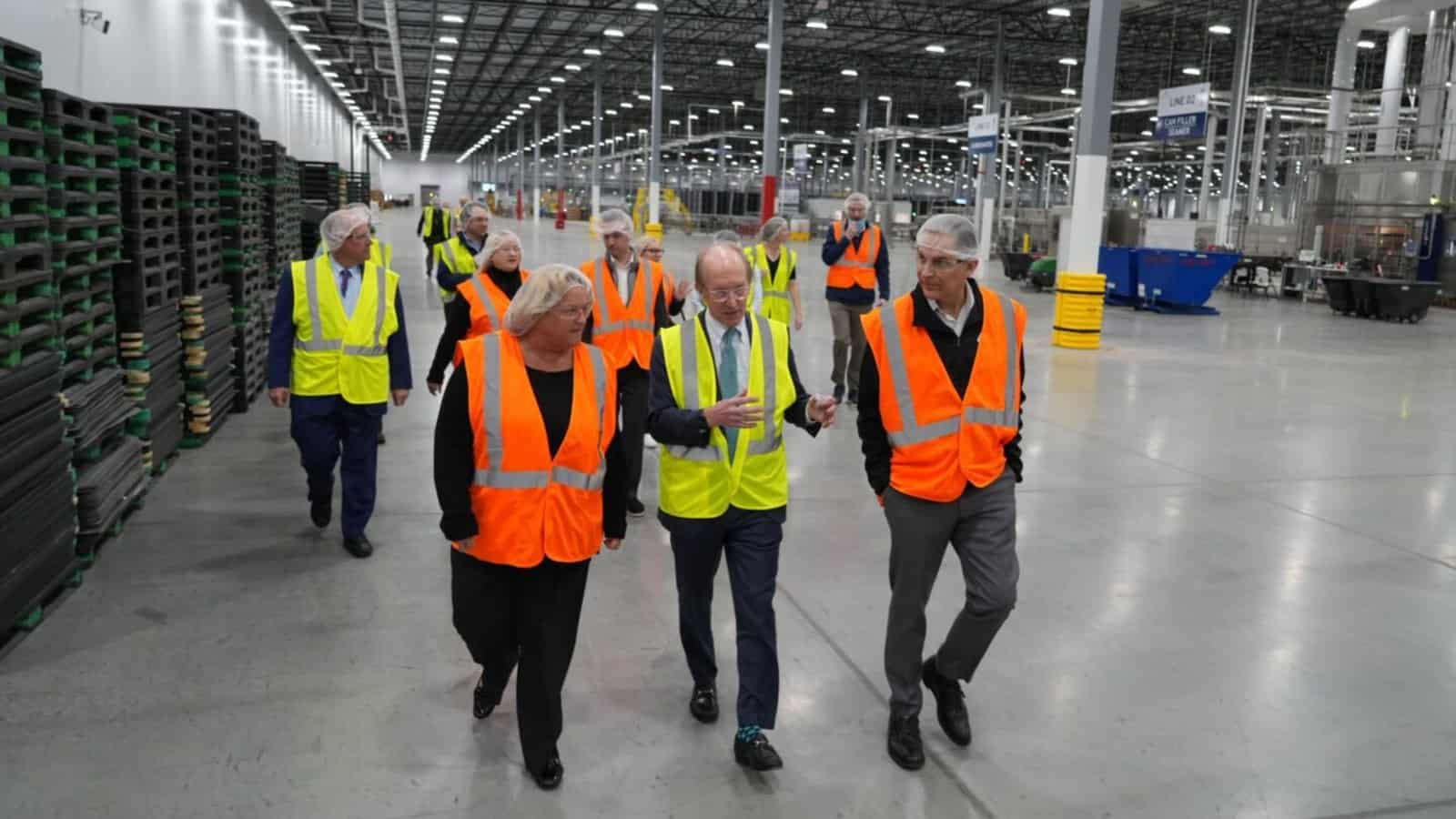
The message: The discussions at Milliken and Springs Creative focused on the need for policies that support manufacturing’s growth, from R&D incentives and competitive taxes to sensible regulations, resilient supply chains and permitting reform, to workforce development, including immigration reform, and energy policy.
The platforms: As newsrooms dwindle, the NAM is stepping into the breach, using its platforms, like NAM.org, social media and its email newsletters, including Input, to amplify manufacturing’s narrative. It’s a bid to ensure that as policymakers and candidates court manufacturers, they’re armed with real stories and concrete policy needs from the ground.
Looking ahead: The tour will continue across the United States, gathering insights and stories to bolster the NAM’s advocacy efforts. Next up: the Competing to Win Tour brings the NAM State of Manufacturing Address to Roseville, Michigan, as well as to Sanders Chocolate and Triumph Gear Systems in Macomb County on Thursday.
Trend of the Week: Sustainability Under Scrutiny

Manufacturers have long prioritized sustainability in their operations, but 2024 will bring new attention to the industry’s efforts. As we continue to explore the major manufacturing trends that will shape the industry this year, here’s what you need to know about this key development.
What manufacturers should do: Manufacturers looking to create strong sustainability plans to meet the expectations of regulators, boards and consumers should start by taking these steps, according to the NAM’s experts.
- Craft an overall organizational sustainability plan with metrics and reporting.
- Make changes and upgrades to support energy and resource efficiency, as well as reduce waste and emissions.
- Focus on sustainable products and packaging in addition to sustainable processes.
- Improve product reclamation or recycling in the circular economy.
Expert opinion: According to UL Solutions, company boards have a particularly key role to play in developing sustainability plans.
- “Boards of directors are bound by their fiduciary responsibilities to shareholders, but savvy directors also recognize that environmental and other ESG-linked risks and opportunities are vital to the long-term health of their organizations,” UL notes.
Resources for you: Check out these NAM resources to learn more about sustainability and compliance:
- NAM Energy will connect you with an adviser to create an energy management strategy that will help you cut costs and reduce your environmental impact.
- This podcast from Milliken & Company’s director of research, compliance and sustainability is an excellent case study for manufacturers seeking to remove or remediate PFAS chemicals.
- Dig into the NAM’s extensive collection of policy explainers, on everything from the Environmental Protection Agency’s regulation of particulates to the Securities and Exchange Commission’s regulation of climate disclosures.
Read the full 2024 trends report here.
Timmons Talks Trade, Tariffs, Democracy in Washington, D.C.
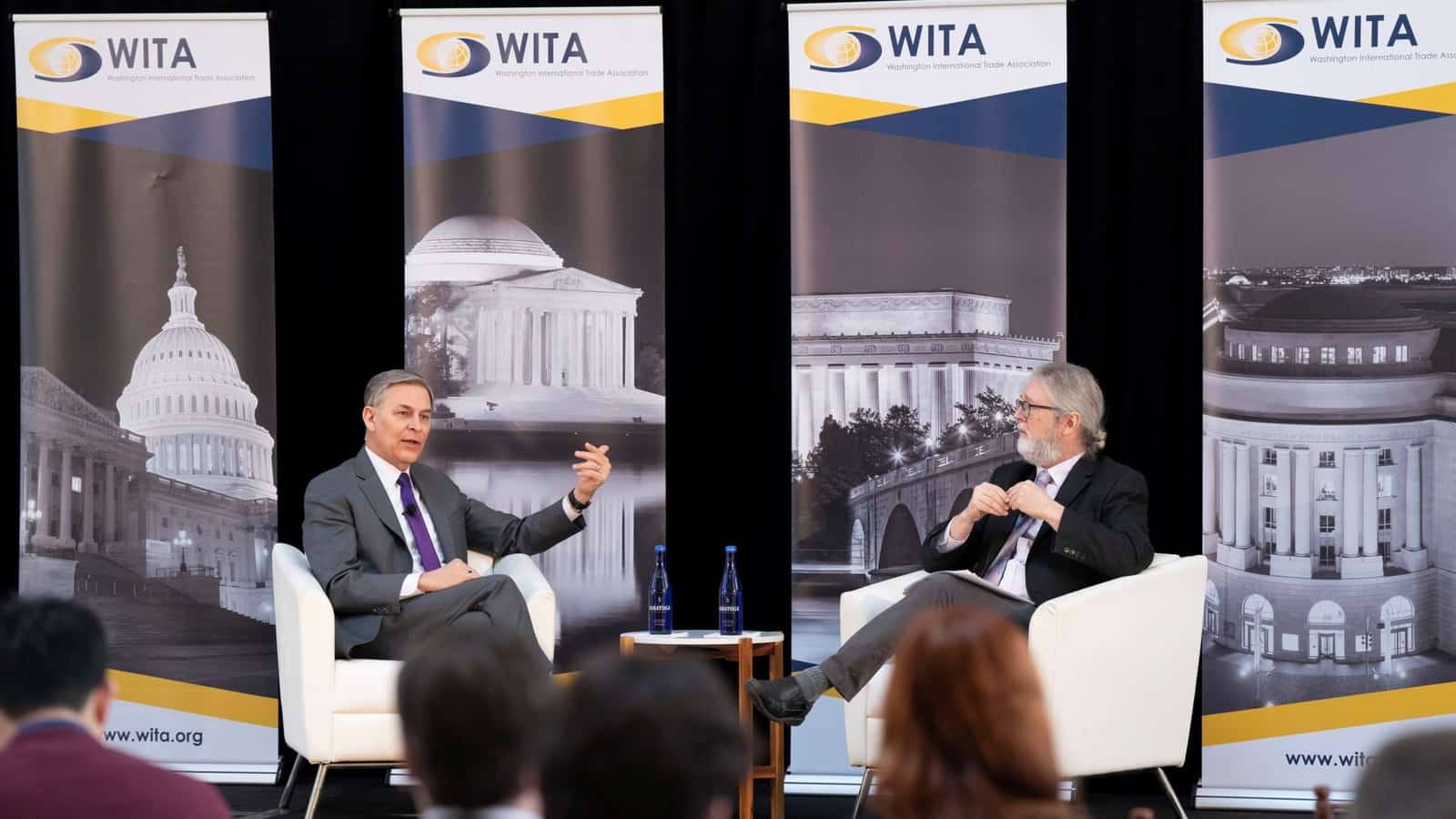
U.S. competitiveness on the world stage, trade agreements, intellectual property, democracy and regulatory certainty—these were just some of the topics NAM President and CEO Jay Timmons covered in a Tuesday interview with POLITICO’s Doug Palmer during the 2024 Washington International Trade Conference.
- The meeting was attended by senior U.S. trade officials and foreign ambassadors and hosted by the Washington International Trade Association in Washington, D.C.
Safeguarding IP: With the World Trade Organization’s 13th Ministerial Conference coming up later this month, Timmons discussed the damage that would result from one of the meeting’s expected agenda items: an expansion of a 2022 TRIPS waiver on IP rights to include COVID-19 therapeutics and diagnostics.
- “Intellectual property is truly the lifeblood of manufacturing,” said Timmons, who met with WTO Director-General Dr. Ngozi Okonjo-Iweala and WTO Deputy Director General Angela Ellard in Geneva last March to discuss the waiver.
- Manufacturers “work hard, and it’s always been kind of a given from the U.S. perspective that intellectual property protections would be front and center. … Obviously, we want to facilitate the growth of manufacturing in other areas of the world, too. But … [it] is a giant leap too far if therapeutics and diagnostics are included in the waiver.”
- American agreement to the expanded waiver, Timmons said, would be tantamount to the federal government telling manufacturers in the U.S., “By the way, we want you to invest in developing more innovations here in this country if we’re just going to turn around and give them away.”
Trade and tariffs: If the U.S. wants to remain competitive, we must negotiate a trade agreement now—and pass the Miscellaneous Tariff Bill, Timmons told Palmer.
- “Trade is really the recipe for peace and the recipe for working together harmoniously,” he said. “We’d like to see more trade agreements. We haven’t seen one negotiated here in the United States for over 10 years—and the rest of the world, quite frankly, is eating our lunch when it comes to negotiating these agreements.”
- The U.S., which has been operating without an MTB for more than three years, “need[s] MTB to not just meet our economic goals and not just feed the supply chains of manufacturers, but also to meet our national security objectives.”
Democracy vs. autocracy: Timmons—who last July led the American business community delegation to Cancun, Mexico, for meetings ahead of the third U.S.–Mexico–Canada Agreement “Free Trade Commission”—stressed the importance of the USMCA to underpinning democratic values worldwide.
- “This agreement is incredibly important to our national security, and it is important to our place in the world,” Timmons continued. “We need to expand the relationship, whether it’s trade or other relationships here in North America, and we need to embrace the relationships and our allies around the world—in Europe and Australia and New Zealand and Japan and other areas—because we are facing a choice … between free market economies and democracies and command economies and autocracies, and I want to strengthen the former, not allow the latter to bloom.”
Other needs: Timmons talked about other manufacturing priorities for the current administration and the next.
- “We need regulatory certainty that gives business leaders the ability to plan for the future,” he said. “We [also] need to invest in workforce incentives. All of those and infrastructure, which we have done, and we continue to do. You can’t just open up the trading system and not expect capital to flow outside of our borders if you don’t have the right policies internally.”
NAM in the news: Read POLITICO Pro’s coverage of the conference and Timmons’ interview here and here.
What’s Ahead for Manufacturing in 2024?

Getting a solid forecast of the year’s key issues in manufacturing can help your business prepare for anything. A panel of experts recently shared their 2024 outlook in the webinar “What’s Ahead for Manufacturing in 2024?” hosted by the Manufacturing Leadership Council, the NAM’s digital transformation arm.
They offered insights on the 2024 manufacturing economy, legislative climate, digital trends, resilience strategies and more.
Economic outlook: NAM Chief Economist Chad Moutray provided a manufacturing economic update.
Key takeaways:
- The NAM Q4 2023 Manufacturers’ Outlook Survey revealed that more than 66% of member companies have a positive economic outlook for 2024, yet opinions are mixed on whether there will be a recession.
- The top economic challenge this year will be the workforce, with the labor market cooling substantially but remaining tight, Moutray said.
- Private manufacturing construction spending is at an all-time high of $210 billion thanks to the production of semiconductors, electric vehicles and batteries, and general reshoring.
- Risks this year include geopolitical turmoil, slow global economic growth, cost pressures, talk of a recession and labor issues, among others.
Policy perspective: NAM Vice President of Domestic Policy Charles Crain gave an overview of the current climate in Washington, D.C., and the NAM’s legislative priorities.
Key takeaways:
- The NAM will continue its focus on tax policy following House passage of an NAM-supported bipartisan tax package that would reinstate three manufacturing-critical tax provisions.
- Manufacturing is facing a regulatory onslaught, with the average manufacturer paying $29,000 per employee per year due to unbalanced, burdensome regulations, according to a recent NAM-commissioned study.
- Artificial intelligence is a hot topic on Capitol Hill, with 60 AI-related bills introduced in Congress last year. The NAM is working to help policymakers understand the benefits of AI, including safety, worker training, product design and development, and efficiency.
Manufacturing 4.0 Trends: MLC Senior Content Director Penelope Brown offered a look at digital manufacturing trends on the horizon.
Key takeaways:
- Manufacturers can expect to see a broader adoption of existing AI applications, including predictive/preventative maintenance, improved processes and enhanced productivity.
- According to the MLC’s recent Smart Factories and Digital Production survey, 65% of manufacturers anticipate their level of M4.0 investment this year will stay the same as last year.
- Other trends to watch include the rise of global partnerships such as Catena-X and CESMII, digitized supply chains and reshoring.
Resilience perspective: Cooley Group President and CEO (and MLC Board of Governors Chair) Dan Dwight shared his approach to resilience in 2024 and the years to come.
Key takeaways:
- Business leaders should prioritize agility and adaptability, even if it means admitting to suboptimal results that require redirection.
- Resilience doesn’t mean perfection; it means learning from failures.
- AI and machine learning contribute to resilience by building out end-to-end visibility across an organization—from vendors to manufacturing operations to customers.
For additional details from these experts, watch “What’s Ahead for Manufacturing in 2024?”
How a Chemical Manufacturer Made Testing Easier

Lubrizol, a specialty chemicals company, faced a challenge common to manufacturers in its sector: how do you test dozens or hundreds of new chemical formulations every year in a timely and cost-effective manner? The answer: better data analysis.
The Wickliffe, Ohio, company developed a virtual testing and data analytics system called Q.LIFE®, a solution so successful that the Innovation Research Interchange (the NAM’s innovation division) recognized it with the IRI Innovation Excellence Award for Digital and Technological Innovation. Here’s how they did it.
The problem: To develop its additives for engine oils, industrial lubricants, gasoline and other products, Lubrizol must run expensive tests that often took weeks if not months to complete.
- LIFE® changed the game, by providing more than 1,000 predictive models for different aspects of product development and deployment. For example, Q.LIFE® can help predict the outcome of those tests before they’re conducted, sometimes even eliminating the need to run a test in the first place.
- It also helps the company identify potential issues with raw materials before they end up in Lubrizol’s products.
- Last, as an added benefit, the system serves as an aid for training new employees on company processes.
Putting it to use: “Getting a handful of early adopters to start using it was key to making this a successful analytics system for years to come,” said Lubrizol Senior Manager of Data Science & Analytics Allison Rajakumar, one of the project’s pioneers.
- The team started by training a small group of employees in how to use Q.LIFE®. Those early users provided feedback on the system as it was being launched.
- As the use of the system grew, those employees acted as ambassadors for Q.LIFE® and trained other workers to use it, too.
Looking ahead: Lubrizol plans to expand Q.LIFE® to include more tools and to extend it to other areas of the business.
- The data science team is working with employees in other divisions, such as the company’s supply chain specialists, to develop models that will help optimize their processes as well.
Get involved: Has your company developed innovations to improve its operations and better serve its customers? If so, it might also be eligible for an IRI Innovation Excellence Award.
- Click here to learn more and start your nomination now. Submissions are due by Feb. 15.
How a Manufacturer Is Solving the Magnet Shortage
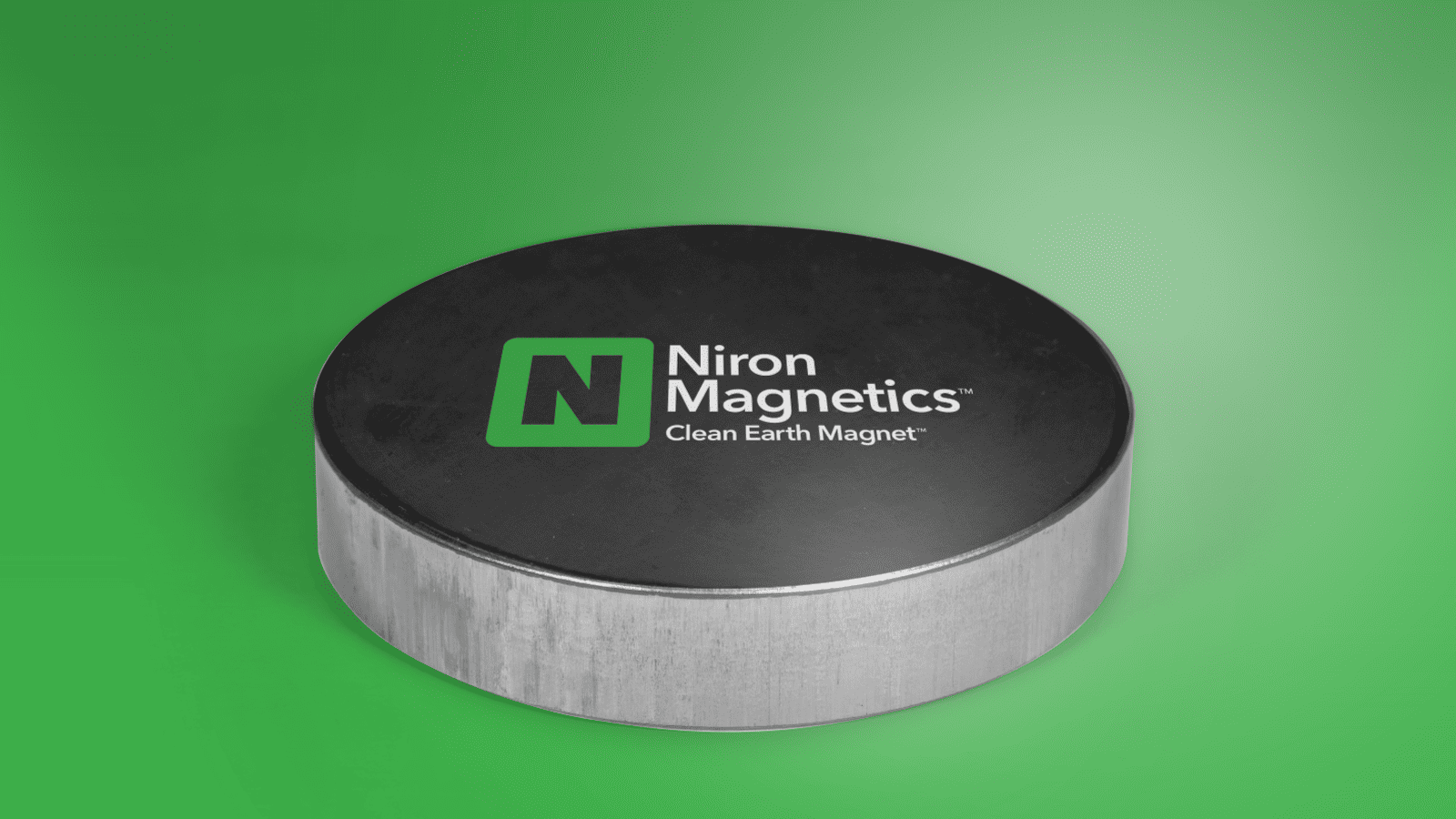
They say all you need is love, but in fact, you need a lot of magnets, too. Computers, appliances, electric generators and cars are powered by permanent magnet motors. Yet, most of the permanent magnets that make our modern life possible rely on rare earth materials, which are expensive, unsustainable and typically mined and processed in China.
To fix this bottleneck, Minneapolis-based Niron Magnetics is producing a new kind of magnet that uses two abundant raw materials: iron and nitrogen. By taking rare earths out of the equation, Niron’s Clean Earth Magnets® provide superior cost and supply chain stability to the countless manufacturers that depend on reliable access to high-powered magnets.
Why it matters: According to Niron, the demand for rare earths for critical magnets is outstripping the supply, and the problem is only getting worse.
- “When you look at the amount of magnets that are needed over the next 10 years, it’s triple the amount that are available today,” said Niron Magnetics CEO Jonathan Rowntree.
- “There’s only enough rare earth materials to double the amount of rare earth magnets manufactured every year. So there’s going to be this big imbalance later this decade. We’re well positioned to [meet] the shortfall of permanent magnets using iron nitride technology.”
The value proposition: Niron’s technology has several exciting upsides, according to company leaders.
- First, it relies on materials that are far more abundant and accessible than rare earths.
- Second, the supply chains for components like nitrogen and iron salts are very stable—and not centered in China.
- Finally, the production of a kilo of rare earth magnets generates 2,000 kilos of waste, according to Niron. By contrast, the production of Niron’s rare earth–free magnets is much more environmentally friendly.
- “Depending on which part you look at, whether it’s water or waste or greenhouse gas emissions, our production process is between 70% and 90% more efficient than the current rare earth processes today,” said Rowntree. “We’re excited about solving the environmental burden from the energy transition.”
Next steps: Niron is planning its first large-scale production facility in the United States, a 10,000-ton facility that it hopes will be operational by 2027.
- While its leaders are still considering different locations for the plant, they anticipate that the facility will ultimately result in 680 to 700 full-time jobs, not including the construction and infrastructure roles needed to build it.
- “We’re growing very quickly here in terms of our capability,” said Rowntree. “We’ve doubled the number of employees this year, and we will likely double that number again over the next several years.”
The bottom line: “There’s a growing awareness of critical materials and the rare earth supply challenges, and the risks posed by U.S. reliance on China to supply those magnets. But there isn’t a lot of awareness around the fact that there is an alternative solution,” said Rowntree. “There is alternative technology that we’re aggressively scaling and that will be commercially available by the end of this year.”
Jennifer Abril to Chair NAM’s Council of Manufacturing Associations
Washington, D.C. – The National Association of Manufacturers announced new 2024 leadership for its Council of Manufacturing Associations at the CMA 2024 Winter Leadership Conference. Jennifer Abril, president and CEO of the Society of Chemical Manufacturers & Affiliates, will serve as chair, and Alison Bodor, president and CEO of the American Frozen Food Institute, will serve as vice chair.
“The CMA’s mission is to demonstrate the vital importance of manufacturing to the American economy,” said Abril. “In collaboration with the NAM, the CMA’s member associations will advocate for job creation, investment and innovation in American manufacturing. The strength and weight of the CMA’s voice is unparalleled, and I am honored to serve as the champion for our collective industries’ resilience and growth.”
Made up of more than 200 industry-specific manufacturing associations representing 130,000 companies worldwide, the CMA creates powerful partnerships across the industry, working with the NAM to unite the manufacturing association community, and ultimately the broader business community, around strategies for increased manufacturing job creation, investment and innovation in America.
“Jennifer and Alison have been instrumental to the success of the CMA, particularly in pushing back against an onslaught of unsustainable regulations that would crush President Biden’s goal of growing manufacturing in the United States,” said NAM President and CEO Jay Timmons. “We are confident that they will work in their expanded roles to amplify manufacturers’ voices and further position our industry for global leadership.”
Abril has led SOCMA since 2016. Prior to that, she served as the president of the International Fragrance Association, North America and held leadership positions at the American Chemistry Council. She previously served as CMA vice chair.
Newly appointed 2024 CMA board members include the following:
- Stephen Kaminski, president and CEO, National Propane Gas Association
- Kelly Mariotti, president and CEO, Association of Home Appliance Manufacturers
- Ellen Thorp, executive director, EPDM Roofing Association
-NAM-
The National Association of Manufacturers is the largest manufacturing association in the United States, representing small and large manufacturers in every industrial sector and in all 50 states. Manufacturing employs nearly 13 million men and women, contributes $2.85 trillion to the U.S. economy annually and accounts for 53% of private-sector research and development. The NAM is the powerful voice of the manufacturing community and the leading advocate for a policy agenda that helps manufacturers compete in the global economy and create jobs across the United States. For more information about the NAM or to follow us on Twitter and Facebook, please visit www.nam.org
NAM Announces New Board Leadership
Seasoned Executives Take Helm at NAM as Policymakers Debate Competitiveness Issues for Manufacturing Industry
Washington, D.C. – The National Association of Manufacturers announced its Board of Directors has elected Johnson & Johnson Executive Vice President and Chief Technical Operations and Risk Officer Kathy Wengel as board chair and Rockwell Automation Chairman and CEO Blake Moret as vice chair.
“Building on the solid foundation left by Immediate Past Chair Jim Fitterling, chair and CEO of Dow, the NAM enters 2024 with continued successful results for our members, strong financial growth and forward momentum with Kathy as chair and Blake as vice chair. Their companies are at the forefront of modern manufacturing, representing the future of what our industry can accomplish,” said NAM President and CEO Jay Timmons. “Over the past often turbulent and unpredictable years, they both have used their platforms to champion our industry and help secure landmark legislation. In addition to being a strong global voice on supply chain reliability and manufacturing for the future, Kathy is a committed force for bringing more diversity into the industry through her support of the Manufacturing Institute’s Women MAKE America Initiative, in addition to her service on the MI Board.
“Blake represents some of the most exciting, high-tech elements of manufacturing, as a leader in the industrial automation and digital innovation space. His commitment to building the next-generation manufacturing workforce was evident when he worked to bring the NAM and MI’s Creators Wanted campaign to Rockwell’s Automation Fair in Chicago. Kathy and Blake’s counsel has been instrumental in shaping the NAM’s policy agenda and elevating the values that make America exceptional and keep manufacturing strong: free enterprise, competitiveness, individual liberty and equal opportunity.”
“The NAM is best in class for its ability to address important challenges facing the manufacturing industry—from bolstering supply chains to harnessing the power of new technology,” said Wengel. “It is a true privilege to take on this new responsibility as NAM board chair. As the association looks to the future, we will seize opportunities to advance policies that foster growth, promote sustainability and ensure the readiness and diversity of the modern workforce.”
“As our industry looks to the future, manufacturing plays a critical role in solving some of the greatest challenges facing society and is at the vital core of the American economy,” said Moret. “It is an honor to represent manufacturing across America as board vice chair of the NAM. I look forward to working with this influential and well-respected association to move our industry forward.”
Wengel serves on the Board of Directors of the MI, the workforce development and education affiliate of the NAM, and has been instrumental in bringing more women into manufacturing through the MI’s Women MAKE America Initiative. Moret has worked closely with Creators Wanted, the industry’s largest campaign to build the workforce of tomorrow and is a past chair of the MI.
The two leaders take on their new roles at a time when manufacturers are confronting growing regulatory hurdles from Washington, D.C., geopolitical instability and policy uncertainty; answering significant questions about the role of advanced technologies, such as artificial intelligence; and working to ramp up implementation of historic legislation like the Bipartisan Infrastructure Law and the CHIPS and Science Act.
The NAM Board of Directors guides the association’s leadership in policy advocacy, legal action, operational excellence, workforce development and news and insights. More than 200 manufacturing leaders serve on the NAM Board, helping advance an agenda that enhances manufacturing competitiveness and the industry’s ability to improve lives in the United States and around the world.
The new board leadership was elected at the September meeting of the NAM Board of Directors.
-NAM-
The National Association of Manufacturers is the largest manufacturing association in the United States, representing small and large manufacturers in every industrial sector and in all 50 states. Manufacturing employs nearly 13 million men and women, contributes $2.85 trillion to the U.S. economy annually and accounts for 53% of private-sector research and development. The NAM is the powerful voice of the manufacturing community and the leading advocate for a policy agenda that helps manufacturers compete in the global economy and create jobs across the United States. For more information about the NAM or to follow us on Twitter and Facebook, please visit www.nam.org.
How Manufacturing Leaders Are Bolstering Their Cyber Defenses

Cybersecurity threats are increasing, while budgets are getting tighter—so what are C-suites doing about it? The NAM, in partnership with PwC, recently conducted a survey of cyber leaders at manufacturing companies to reveal how they think about their operational security and where they aim to make progress.
Why they do it: When asked why their companies are reinforcing the security of their operational technology, cyber leaders showed that they are thinking deeply about their firms’ long-term development.
- Nearly 50% of respondents said they aimed to defend against ransomware—a smart response, given that 2022 saw almost double the number of ransomware attacks on industrial environments as 2021. Worse yet, 70% of those attacks targeted manufacturers.
- The second most popular answer, however, was the companies’ own internal roadmaps outlining their priorities and technology requirements. This shows how integrated cyber defenses are into companies’ long-term plans; they know that as their operations grow more sophisticated and complex, their cyber defenses have to do so as well.
- Last, cyber leaders also cited the evolution of “Manufacturing 4.0,” as they recognize that the rising sophistication of factories and “smart” technology increases attack surfaces and vectors, therefore requiring smarter and more extensive cybersecurity.
Another positive sign: One of the key indicators of success for cyber leaders is whether their IT teams—which traditionally handle cyber defenses—are in sync with their teams handling operational technology.
- On that score, the survey had good news: more than 30% of respondents said those teams were fully integrated at their companies, and almost 40% said they were partially integrated.
Reporting back: A cyber chief needs to keep the rest of the C-suite and the board informed, but not overwhelmed. So what do they tell other company leaders?
- Nearly 80% of respondents said they give updates on what you might expect: the deployment of technical controls or countermeasures to attacks, as well as progress in implementing their roadmaps.
- About 50% of respondents also said they give updates on security audits, and almost 40% provide reports on compliance with regulations.
In their own words: Several CISOs who reviewed these findings for the NAM explained the reasoning in greater detail:
- One CISO said that “getting into quantitative discussion with boards around risk is hard, so the easier route is to do implementation updates, which provide measurable results.”
- Another CISO said “it’s better to share about what is being done, including patches and roadmaps [than overloading boards with background information].”
Get involved: Are you interested in finding out firsthand how companies handle real cyber challenges? Tell your CISO about the Manufacturing Cybersecurity Advisory Council, a group of CISOs from around the industry who gather every other month for a confidential discussion moderated by the NAM’s COO, Todd Boppell.
- The meetings feature guest speakers, feedback on important issues and discussions of current trends, with a focus on how CISOs at large manufacturers should handle threats throughout the supply chain.
Weigh in: If you’d like to share your company’s own approach to operational technology security, you can take the NAM and PwC’s survey yourself!
Further reading: Lastly, check out PwC’s list of tips for companies looking to beef up their cyber defenses.
